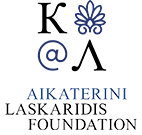Mythology (161 Subjects)
Mythological composition referring to ancient Corinth: ruins, antiquities, Chimera and Bellerophon riding Pegasus.
The myth of Perseus. In Ethiopia, Perseus is saving Andromeda from the sea monster Kitos. On the right, Andromeda's parents, and their guards. The myth has certain references to Peloponnese, for Perseus was originally from Argos and he founded the city of Mycenae.
View of Dodoni, Thessaloniki and Vale of Tempi (imaginary representations) framed by mythological scenes. From: Jacobus Gronovius, Thesaurus Graecarum Antiquitatum, 1699.
Title page of the first voyage of the author.
Members of the mythicla tribe of the Pyglimes kill cranes with arrows, mounted on rams, in accordance with Pliny's description.
Volcanic minerals discovered in Istanbul, around the area of the mythic Symplegades or Clashing Rocks: 1) The western side of Yum Burnu promontory, on the norheastern shore of the Bosporus, at the junction with the Black Sea. 2. Agglomerate of volcanic minerals with porphyry veins from Kadiköy (anc. Chalcedon), discovered by the author at Buyuk Liman, on the norheastern shore of the Bosporus. 3) Porphyry from Kadiköy (anc. Chalcedon). 4) Basalt from Buyuk Liman, norheastern shore of the Bosporus. 5) The eastern side of the northeastern end of the Bosporus, at the junction with the Black Sea.
The Shrine of Nymph Feronia, three miles north of Terracina in Italy.
View of Snake Island at the Black Sea. According to the myth, this is were Thetis took the bodies of Achilles and Patroclus.
Signet from Istanbul: the flight of Aeneas from Troy.
Lamp with Ganymedes, taken to Britain by the author.
God Pan.
Forest in Arcadia, drawn in accordance with the perception of Arcadia as a pastoral paradise.
Ariadne on Naxos.
Head of nymph Clytia, British Museum.
Iphigenia in Tauris, based on the painting by Anselm Feuerbach.
Detail of the Gigantomachy relief o the Pergamon Altar, today kept at Pergamonmuseum, Berlin.
Farnese bull, Hellenistic sculpture complex, Museo Archeologico Nazionale, Naples.
Sculpture of Laocoön and his Sons, Vatican Museums, Rome.
The meeting of Odysseus and Nausicaa.
Medea, after painting by Anselm Feuerbach.
Top: Cave of Nestor, located at Palaiokastro, to the side of Voidokoilia beach. Topographical map of the adjacent area. Bottom: Ruins of the walls of ancient Pylos, incorporated into the fortifications of the Venetian fortress of Palaiokastro.
1-3. View, reconstruction and plan of the Cave of Heracles on Mount Cynthus, Delos island. 4-9. Architectural features of columns and part of wall surrounding the sanctuary of Zeus and Athena on Mount Cynthus, Delos.
Temple of Poseidon at Sounion: Reconstruction and architectural features from the pronaos entablature, details from a lintel and a base of anta and column. The frieze shows a scene from the Labours of Theseus.
Temple of Aphaia, Aegina island: Elevation of the temple façade (eastern side), reconstructed.
Reconstruction of the pediments of the temple of Aphaia on Aegina island: 1. Western pediment: scene from the Trojan War. 2. Eastern pediment: Heracles against Laomedon, king of Troy.
Western pediment of the temple of Aphaia, Aegina island. 1. Telamon 2. Laomedon.
Western pediment of the temple of Aphaia, Aegina island. 1, 2: Heracles.
Western pediment of the temple of Aphaia, Aegina island. 1, 2: Warriors.
Temple of Aphaia, Aegina island: Pediment fragments. 1. The head of goddess Athena from the western pediment.
Temple of Aphaia, Aegina island: Pediment fragments.































